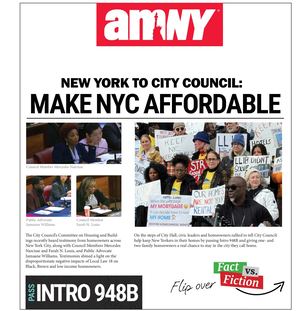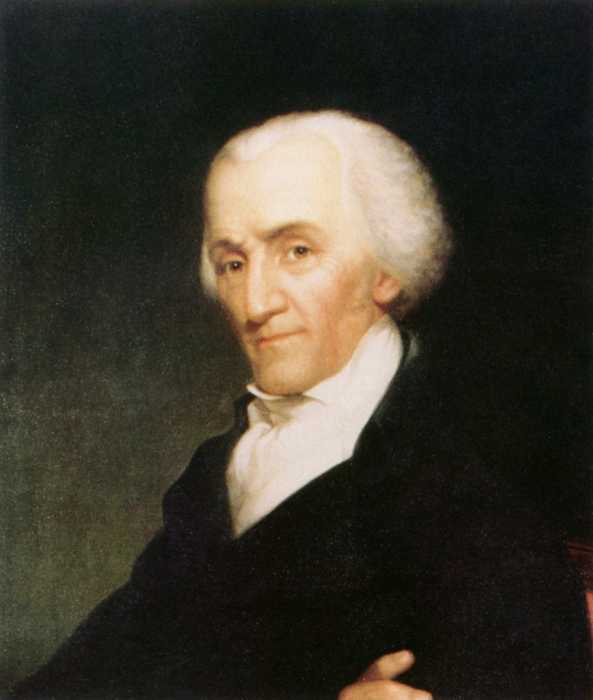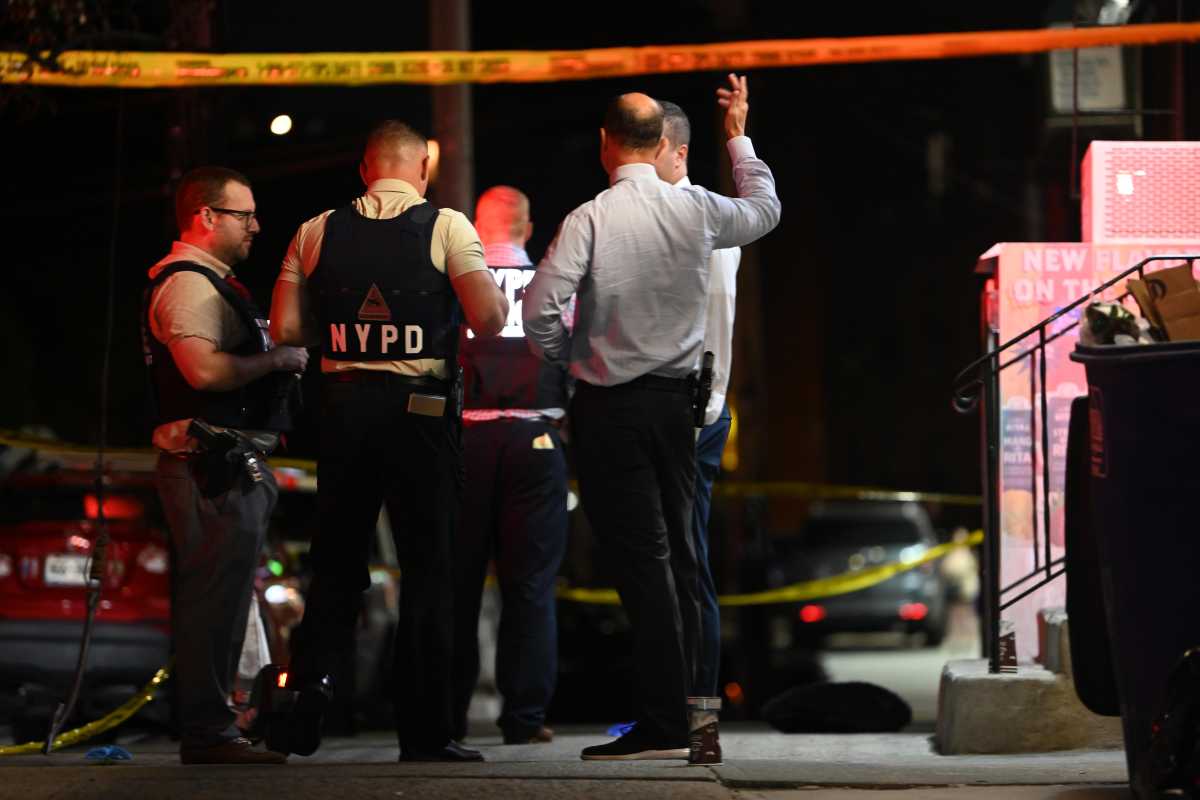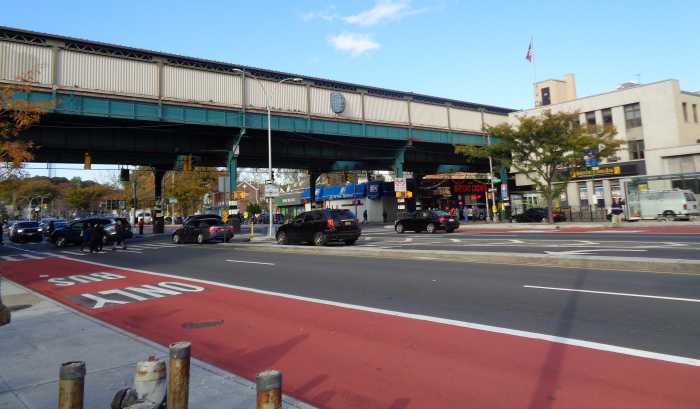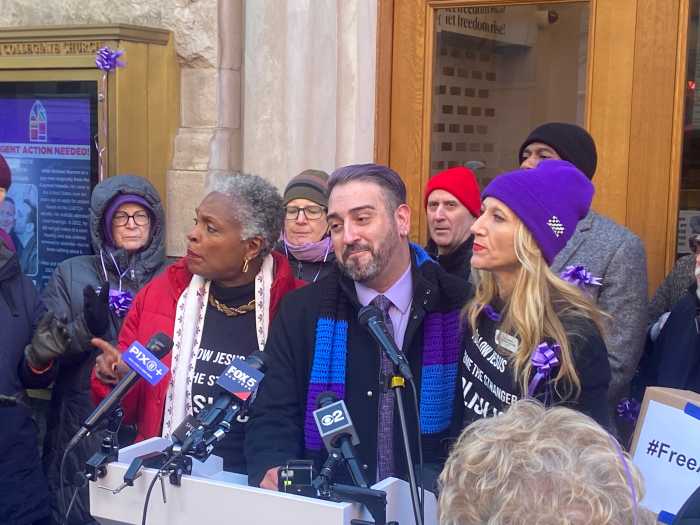The Sheridan Expressway, a busy and imperfect highway, has cut through this part of the Bronx for so long it’s almost just scenery — one of the great failures of 20th century master planner Robert Moses that still haunts the borough.
Anthony Jackson, 48, was using it like a regular street last week, darting precariously between cars coasting northeast of 174th, where they sometimes moved slow enough for him to ask for “a little finance,” as he explained, holding up a quarter he’d just earned. Passenger cars sometimes rolled down their windows. The many trucks were too high for him to engage.
Wesley Bush, 24, pointed at the highway, which separates a residential area from the Bronx River and the spectacular Starlight Park. He said he and friends used to run across it when they were kids. “For the fun of it. It’s dangerous, but that’s what we used to do.” Back then, the park wasn’t there.
It opened in 2013 and Gov. Andrew Cuomo has doubled down on renovation plans for the area, pledging $700 million in his 2017-2018 budget for the first phase of a $1.8 billion project to turn the unloved expressway into a boulevard and rewrite an emblematic piece of city infrastructure history by subtraction, not addition.
The expressway, born in the early 1960s, was the brainchild of Moses. It was Moses “at his worst,” according to director of the NYU Rudin Center for Transportation Mitchell Moss in a video released by the governor’s office.
The small patch of highway was meant to continue on through the Bronx — even through the Bronx Zoo — connecting with the New England Thruway and points north.
That was typical Moses, who loved highways and thought cars were the transportation of the future.
Many see his actions differently now. His highways were simply a way “to move through low income communities and communities of color,” says Angela Tovar, community development director for The Point, a neighborhood organization that has been advocating for the removal of the expressway for two decades.
Highway construction in the Moses era displaced thousands, and then separated neighborhoods upon completion. The crowning achievement of this unfortunate saga may have been that other Bronx road, the Cross Bronx Expressway, which drastically reduced livability and property values in the borough yet remains embedded in it.
The Sheridan is smaller, but still consequential: it blocks enjoyment and development of key waterfront property. And trucks make up much of the traffic on the expressway, en route to the economically vital Hunts Point Market.
To make matters worse, the highway is at ground-level, so those trucks plummet along next to houses, buildings and the riverside park. Diesel fuel has made the area one of the city’s worst for asthma rates for generations, Cuomo said while announcing his new plan.
Tearing down a highway is a bit of a departure for Cuomo, who has been fashioning himself as Governor Builder, a rival to Moses himself, with big plans for La Guardia Airport, Penn Station, the Second Avenue Subway, the Tappan Zee Bridge. Leave the bike lanes to Mayors Michael Bloomberg and Bill de Blasio.
But here, he is scaling back rather than up — including a bike-friendly design — along the lines of a similar boulevard plan suggested by a city study in 2013: creating pedestrian crossings and ramps to get right to the market, in place of a serious highway.
The Southern Bronx River Waterfront Alliance, a coalition of community groups that includes The Point, is glad to see the highway go. “It’s a long time coming,” says Tovar.
It’s not for everyone. Heading away from the highway, James Mayo, 38, questioned why all that money was needed on a few new entrances and a new road. “That makes no sense,” he said. He questioned why not build more buildings, house the homeless.
Tovar stresses that the highway has always been a quality of life issue, and detrimental to health outcomes just by decades’ worth of pollution belched out thoughtlessly right next to apartments, parks, schools.
And, the new design will free up the waterfront again, as has already happened in wealthier neighborhoods like Brooklyn Heights and Manhattan’s West Side.
On Friday, two teenagers huddled in the cold on a bench in Starlight Park — the boy from the river side of Sheridan, the girl from the opposite end. She crossed the 174th Street bridge and they met in the middle, their bench facing the trucks still honking and speeding by.
But looking in the other direction behind them, where the Bronx River curves around tree-lined banks, you might think you were in those New England or upstate suburbs those cars are speeding towards.
The new design includes a street-level pedestrian crossing at 173rd, meaning the trip from city to near-forest would be as easy as crossing the street.
